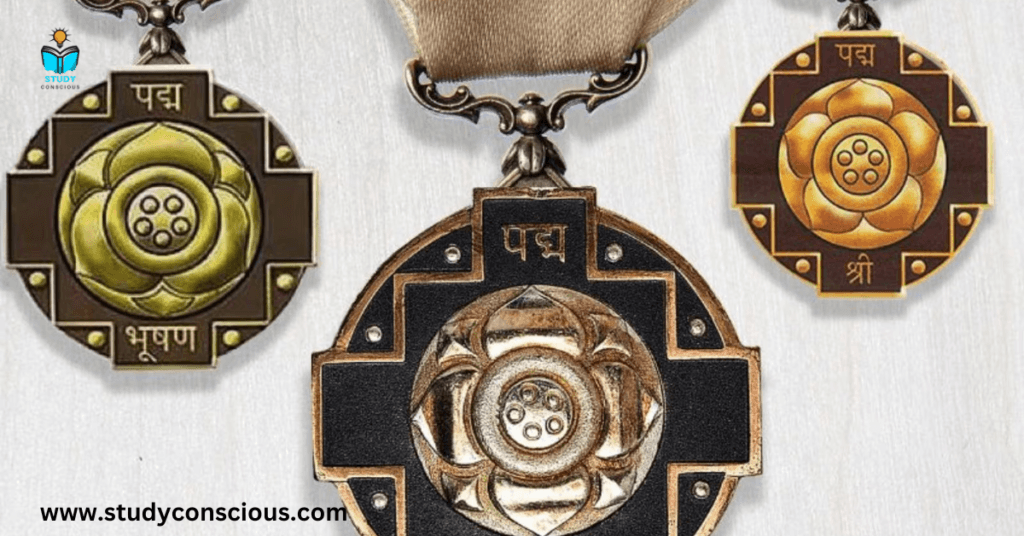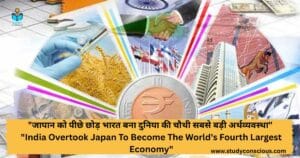The Padma Shri is the fourth-highest civilian award in India, conferred by the Government of India to recognize individuals for their distinguished contributions in various fields. Established in 1954, it celebrates excellence across a broad spectrum of disciplines. The declaration of Padma Shri awardees including Padma Bhushan and Padma Vibhushan was done and the awardees will receive the awards around March an April. These awards will be conferred by the President of India at ceremonial functions held at Rashtrapati Bhawan.
The Padma Awards for 2025 have been announced, honoring individuals for their exceptional contributions across various fields. This year, a total of 139 awards have been conferred, categorized as follows:
- Padma Vibhushan: 7 recipients
- Padma Bhushan: 19 recipients
- Padma Shri: 113 recipients
Padma Vibhushan (for exceptional and distinguished service):
- Jagdish Singh Khehar
- Kumudini Lakhia
- M. T. Vasudevan Nair (posthumous)
- D. Nageshwara Reddy
- Sharda Sinha (posthumous)
- L. Subramaniam
- Osamu Suzuki (posthumous)
Padma Bhushan (for distinguished service of higher order):
- Dr. V. K. Saraswat
- Arijit Singh
- Ajith Kumar
- Shekhar Kapur
- R. Ashwin
- Shankar Mahadevan
- Dr. Devi Shetty
- Dr. Tessy Thomas
- Dr. M. S. Swaminathan (posthumous)
- Dr. K. Sivan
- Dr. Soumya Swaminathan
- Dr. Randeep Guleria
- Dr. Gagandeep Kang
- Dr. Balram Bhargava
- Dr. V. K. Paul
- Dr. N. K. Arora
- Dr. R. S. Sharma
- Dr. S. K. Sarin
- Dr. P. K. Mishra
More about Padma Shri

Key Features:
- Purpose: To honor distinguished service in any field, including:
- Arts
- Literature and Education
- Sports
- Medicine
- Social Work
- Science and Engineering
- Public Affairs
- Trade and Industry
- Civil Services
- Other areas like craftsmanship and innovation.
- Eligibility:
- Open to all Indian citizens regardless of age, caste, or religion.
- Non-Indians, including Persons of Indian Origin (PIOs) and Overseas Citizens of India (OCIs), may also receive it for exceptional contributions.
- Award Design:
- The medal is a circular bronze medallion with the lotus emblem at its center.
- Inscribed with the words “Padma” (Lotus) and “Shri” (Respected) in Devanagari script.
- Ceremony: Presented by the President of India at a special function held at Rashtrapati Bhavan, New Delhi, typically in March or April each year.
- Selection Process:
- Recommendations are solicited from the general public, state governments, and central ministries.
- A committee appointed by the Prime Minister reviews the nominations before approval by the President.
The Padma Shri is a prestigious recognition, often awarded to individuals whose efforts have significantly impacted society, contributed to India’s development, or achieved global excellence in their field.
More about Padma Awards
The Padma Awards are among the highest civilian honors in India, instituted in 1954 by the Government of India. They are conferred annually to recognize individuals for their extraordinary achievements and distinguished contributions across various fields of activity.
Categories of Padma Awards
- Padma Vibhushan:
- The second-highest civilian award in India.
- Conferred for “exceptional and distinguished service.”
- Recognizes achievements of the highest order across any field.
- Padma Bhushan:
- The third-highest civilian award in India.
- Awarded for “distinguished service of a high order.”
- Acknowledges significant contributions in any area of activity.
- Padma Shri:
- The fourth-highest civilian award in India.
- Given for “distinguished service in any field.”
- Celebrates excellence and impactful work at a broader societal level.
Fields of Recognition
The Padma Awards honor achievements in various fields, including:
- Art: Performing and visual arts such as music, dance, and theater.
- Social Work: Contributions toward community service, philanthropy, and human welfare.
- Public Affairs: Government service, leadership, and diplomacy.
- Science and Engineering: Achievements in research, technology, and innovation.
- Trade and Industry: Business leadership and entrepreneurship.
- Medicine: Pathbreaking work in healthcare, public health, and medical research.
- Literature and Education: Contributions to education, literary works, and academic research.
- Sports: Excellence in sports and athletics, promoting national pride.
- Civil Service: Distinguished service by officers of government agencies.
- Others: Exceptional contributions in fields like environmental protection, grassroots innovation, and cultural preservation.
Eligibility
- Open to Indian citizens and foreign nationals (including NRIs and OCIs).
- Individuals from any age group, gender, or social background can be nominated.
- Awards are not given posthumously except in highly deserving cases.
Nomination and Selection
- Nomination:
- Nominations can be made by the general public, state governments, central ministries, or even individuals themselves.
- Online submissions are encouraged through the official portal.
- Selection Process:
- A Padma Awards Committee, constituted by the Prime Minister, reviews nominations.
- Recommendations are finalized by the committee and approved by the President of India.
- Announcement:
- Announced annually on the eve of Republic Day (January 25).
Ceremonial Presentation
- The awards are presented by the President of India during a formal ceremony held at Rashtrapati Bhavan in New Delhi.
- The ceremony usually occurs in March or April.
Significance
The Padma Awards highlight India’s recognition of meritocracy, bringing attention to individuals who have made a lasting impact on society. They reflect the values of dedication, service, and excellence.
These awards have honored notable figures such as Dr. A.P.J. Abdul Kalam, Satyajit Ray, Sachin Tendulkar, Amartya Sen, and many others who have significantly contributed to India’s global stature.
History of Padma Awards in India
The Padma Awards were instituted in 1954 by the Government of India to recognize exceptional contributions by individuals in various fields. These awards serve as a means to honor and celebrate excellence, talent, and service to the nation.
Founding and Inception
- Establishment:
- Instituted in 1954, the awards were designed to honor exceptional and distinguished service across a range of activities.
- Initially, the awards included Padma Vibhushan, which had three sub-categories:
- Pahela Varg (First Class)
- Dusra Varg (Second Class)
- Tisra Varg (Third Class)
- In 1955, these sub-categories were reorganized into three separate awards:
- Padma Vibhushan (Second-highest award)
- Padma Bhushan (Third-highest award)
- Padma Shri (Fourth-highest award)
- Design:
- The awards’ medallion designs have evolved over the years.
- Initially, they featured different shapes and motifs, but since 1955, the medallions have taken on their current forms:
- Padma Vibhushan: Circular, with a lotus in the center and two floral wreaths.
- Padma Bhushan: Circular, with a lotus in the center and a slightly simpler design.
- Padma Shri: Circular, with a lotus in the center and a bronze tone.
Key Developments in the History of the Padma Awards
- Suspension During Political Transitions:
- The awards were temporarily suspended twice in India’s history:
- 1977–1980: During the Janata Party government, the awards were questioned for being elitist and politically motivated.
- 1992–1996: Following allegations of irregularities in the nomination process, the awards were paused for review and reforms.
- The awards were temporarily suspended twice in India’s history:
- Resumption:
- After each suspension, the awards were reintroduced with clearer criteria and more transparency in the selection process.
- Inclusion of Diverse Fields:
- Initially, the awards focused on arts, literature, and public service.
- Over time, they expanded to include categories like sports, medicine, science, environment, and grassroots innovation, reflecting India’s evolving priorities.
- Recognition of Unsung Heroes:
- In recent years, efforts have been made to recognize grassroots achievers, social workers, and those from marginalized communities to promote inclusivity.
Important Milestones
- First Awards Ceremony (1954):
- The first recipients included Satyendra Nath Bose, Nandalal Bose, and J.R.D. Tata.
- The ceremony was held at Rashtrapati Bhavan, New Delhi.
- First Foreign Awardees:
- Over the years, notable foreign nationals have been honored, such as Nelson Mandela (Padma Vibhushan) and Bill Gates (Padma Bhushan).
- Posthumous Awards:
- Posthumous recognition is rare and granted only in exceptional cases, like Satyajit Ray (1992) and M.S. Subbulakshmi.
Key Contributions to Indian Society
- The Padma Awards reflect India’s gratitude towards those contributing to its development, whether through scientific innovation, artistic creativity, or social empowerment.
- These awards highlight the significance of service, often recognizing unsung heroes who work tirelessly in remote areas.
Evolution Over the Years
- Transparency:
- The nomination process has been made more transparent, with online portals and citizen participation introduced in recent years.
- Inclusivity:
- Awards are now more diverse, with emphasis on recognizing achievers from tribal communities, rural areas, and lesser-known fields.
The Padma Awards are a symbol of India’s respect for talent and service, upholding the principles of excellence and national pride for over seven decades.











